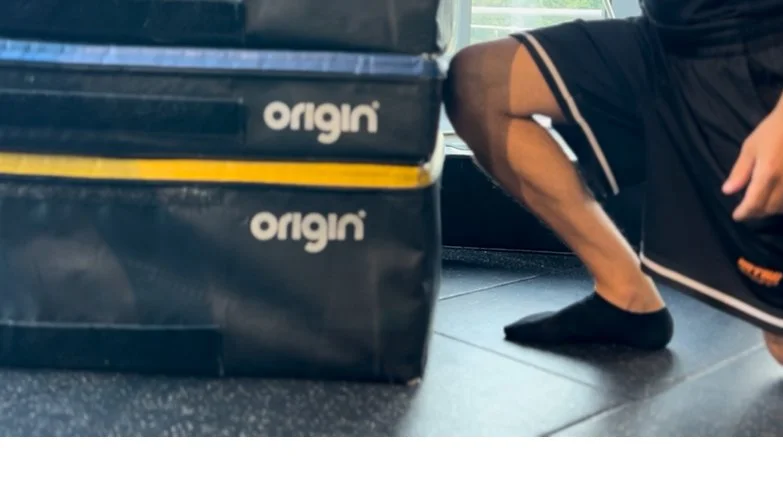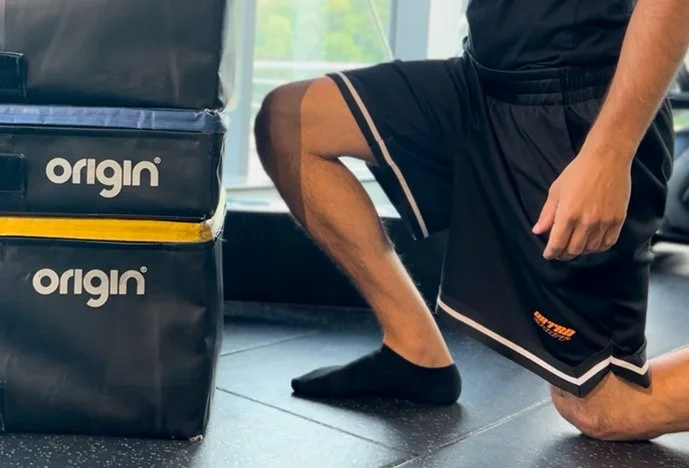4 reasons why you can’t Pistol Squat
Many people struggle to perform a proper pistol squat, even if they’re strong and fit. Did you ever wonder why ?
The answer is actually very simple: it’s not just about leg strength! Mobility, stability, balance, coordination, and flexibility all play a crucial role.
In this article, I’ll break down the most common reasons why you might not be able to do a pistol squat yet—so if you think you belong to this category of people, keep reading !
1. Insufficient Ankle Dorsiflexion
This is surely the number one reason.In fact , the foot must stay flat on the ground while the knee moves forward past the toes, requiring a decent amount of ankle dorsiflexion. Unfortunately for you ( if this is the case ) , the ankle joint prefer stability over mobility, and the mobilization of this last one may tight a long time .
If ankle mobility is limited, you’ll:
Fall backward
Compensate with lumbar flexion, hip shifts, or knee valgus
Struggle to maintain foot flat on the ground ( maintaining a tripod )
Restricted dorsiflexion often stems from tight gastrocnemius and soleus muscles ( calves ) , or a stiff Achilles tendon. Alternatively, joint capsule restrictions or anterior ankle impingement can also limit range of motion.
Also injury or history , like ankle sprain, surgery etc…
TEST
Now the question is : how do you know if you lack of mobility ?
The most common test for ankle mobility is the knee-to-wall test :
Stand facing a wall, with your toes about 4-5 inches (or one hand's width) away from the wall.
Place one foot firmly on the ground, and the other knee on the ground, ensuring the knee is aligned with the second toe.
Keeping your heel on the ground, try to touch your knee to the wall without your heel lifting off the ground.
If you can touch your knee to the wall without your heel lifting, you likely have adequate ankle dorsiflexion. If your heel lifts off the ground before your knee touches the wall, it indicates a potential ankle mobility restriction.
Test passed
Test not passed
Obviously repeat the test on the other leg.
EXERCISES
Banded Ankle Distractions: using a resistance band to gently separate the bones of the ankle joint, improving mobility and reducing stiffness
The band is anchored and looped around the foot (top), and then the body weight is used to assist in dorsiflexing the ankle, effectively stretching the jointFoam Rolling Calves: great to loosen off your calves when they’re tight from training. Move the foam roller slowly over the muscle groups, and when you find a tender spot in your calves, work the area a bit longer ( but don’t press too hard)
Static Calf Stretch : holding a stretched position for a period of time, typically 30-60 seconds
Heel-Elevated Squats : a variation of the traditional squat where the heels are placed on a wedge or elevated surface, like a plate, to increase squat depth and focus on quadriceps engagement. Over time you can remove the plate .
Weighted Dorsiflexion Stretch (knee-over-toe holds with dumbbell) :involves adding weight to the ankle or knee to increase the stretch and improve range of motion
GLOSSARY
Achilles Tendon : a strong tendon connecting calf muscles to the heel bone, enabling plantar flexion (pointing the toes down) and helping with walking, running, and jumping
Soleos :is a powerful lower limb muscle, which is situated deep to the gastronemius muscle. Together with gastronemius and plantaris, it forms the calf muscle or triceps surae It runs from back of the knee to the ankle
Gastrocnemius :complex muscle that is fundamental for walking and posture. The gastrocnemius muscle is superficial, can be easily seen and can be touched on the back of your lower leg. Gastrocnemius has two heads and runs from the back of the knee to the heel.
Dorsiflexion : movement where the top of your foot moves toward your shin. It primarily occurs at the ankle joint (talocrural joint) and is crucial for tasks like squatting, walking, running, and jumping.
Normal dorsiflexion range: 10–20°
Pistol squats often require closer to 35–40° (due to the upright torso and depth)
2. Poor Hip Stability and Strength
Hip stability refers to the ability of the muscles surrounding the hip joint to maintain controlled alignment of the pelvis and femur during dynamic movement.
Hip strength involves the ability of the larger muscles to generate force through hip extension, flexion, abduction, and rotation.
Together, hip stability and strength provide:
Pelvic control
Knee alignment
Trunk stability
Balance and coordination
So in the case of pistol squat this is mainly related to the gluteus activation , in fact the gluteus medius and minimus must stabilize the hip in the frontal plane, while the gluteus maximus and hamstrings control the sagittal plane.
Poor hip stability can affect the pistol squat in deifferent ways , like:
a. Valgus Knee (knee collapse in)
This is mainly caused by a weak or inactive gluteus medius and external rotators fail to counteract inward movement of the femur.
b. Pelvic Drop
When the glute medius can’t stabilize the pelvis, the opposite side of the pelvis drops during the movement., this cause a loss of balance; increases strain on the lower back and hips.
c. Excessive Forward Trunk Lean
If the hips can’t generate enough force or stability, the body compensates by shifting the center of mass forward, which means that you will lose your upright posture, and decrease quads engagement, with a consequent compensation of the lower back .
d. Lack of Hip Control During Eccentric Phase
Without controlled hip extension/flexion, the descent becomes uncontrolled and you can lose your balance , especiallly at the bottom of the movement
EXERCISES
There are a list of exercises that can be done in order to improve mobility and strength in the muscle surrounding the hip joint
Clamshells : a strengthening movement performed on your side, targeting the hip abductor muscles( so in this case the gluteus medius, which are crucial for balance and stability)
Single leg rdl : this is
Bulgarian split squats : unilateral (single-leg) squat variation where one foot is elevated on a bench or step behind the other. Depending on the distance to the bench , it activate the gluteus or hamstring more or less compared to the quads
Hip thrust: a strength exercise that targets the glutes, hamstrings, and core and it’s considered the king of the glutes muscle. It's typically performed with a barbell or weight plate placed on the hips and elevated against a bench or box.
GLOSSARY
Valgus knee : Valgus knee, or "knock knee", is a deformity of the lower leg where the knee joint angles outward from the body's midline. This condition is defined by a valgus angle of 10° or more.
Gluteus maximus : is the largest and heaviest muscle in the body. It is the most superficial of all gluteal muscles that are located at the posterior aspect of the hip joint. It is the main hip extensor , but its action include also abduction of the hip, lateral rotation and
Gluteus medius : The gluteus medius is located on the lateral aspect of the upper buttock, below the iliac crest
Gluteus minimus :Gluteus minimus muscle is the smallest one of the three gluteal muscles, it lies deep to the gluteus medius muscle. The gluteus minimus is similar to the gluteus medius in function, structure, nerve and blood supply
3.Core weakness
Core includes multiple muscles that stabilize your spine, pelvis, and hips. These include:
Rectus abdominis
Obliques (internal and external)
Transverse abdominis (deep abdominal muscle)
Erector spinae
Multifidus and quadratus lumborum
Hip stabilizers (glute medius/minimus)
When these muscles are weak or not properly engaged, your body lacks stability.
More in detail , the Core muscles provide :
1. Spinal Stability
Your spine needs to stay neutral (not rounded or arched) as you squat down. Weak core muscles can’t maintain that position, leading to:
Rounding of the back (especially at the bottom)
Excessive forward lean
2. Pelvic Control
A strong core helps keep your pelvis level. Without that control, you may:
Tilt or twist the pelvis
Drop the hip on the non-working leg
Lose balance or collapse inward
3. Balance and Coordination
If your core is disengaged:
You’ll feel “wobbly” and not stable during the descent and it becomes harder to control the movement smoothly
Your non-working leg may drift or drop
EXERCISES
You can both use static and dynamic movements , luckily for you there are hundreds of core muscles exercises out there , and I will not list them all.
However they can be categorized into :
STATIC : Focus on exercises that build deep, anti-flexion/anti-rotation strength. These exercises can include the plank, dead bug, bird dog, and side plank.
DYNAMIC : Integrate core activation with movement . These exercises can be hanging leg raises , woodchoppers.
4.Lack of Movement Pattern Familiarity
In simple terms, this means your body and brain haven't learned the movement of a pistol squat yet. Even if you have the strength, mobility, and balance, your nervous system may not have developed the coordination needed to perform the movement. In fact in a pistol squat many muscles are recruited and they have to work together to complete the movement .
A pistol squat has a specific motor pattern . It involves:
Deep knee and hip flexion
Forward reach with the arms
Straight leg hold
Core bracing
Precise balance shifts
As you can see there are many things to keep in mind .
Without consistent exposure to the pistol squat movement, your body hasn't yet learned how to activate the right muscles in the right order .
EXERCISES AND PROGRESSIONS
So this is the most technical list of exercises so far , because is relate to specific progressions :
Assisted Pistol Squats ( using plates ) : this is in my opinion the best way to build the motor pattern , the progression is very simple and you can start it even if you are a beginner ( unless you have some mobility limitations )
Box Pistol Squats : this is a good method if you want to build some leg stregth , however I don’t find it as useful as the above one , because you lose the most important aspect of the movement , which the balance and coordination ( in fact you sit at the bottom position )
Negative (Eccentric) Pistol Squats: I consider this progression useful if you lack of glutes activation . However, if you are a beginner in this movement, you will need to build a bit of strength and motor control before approaching the negatives.


